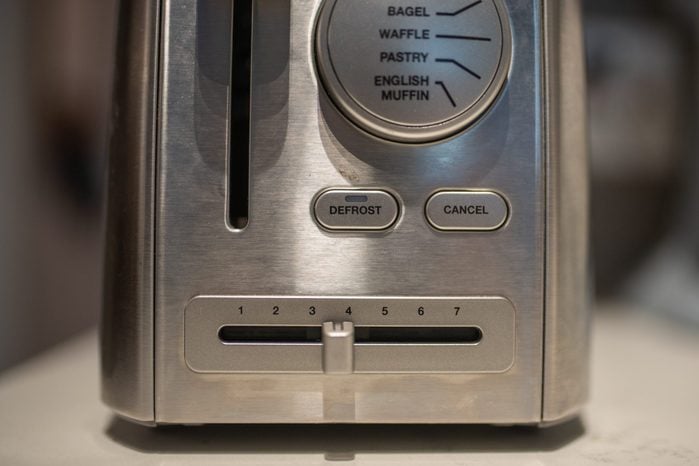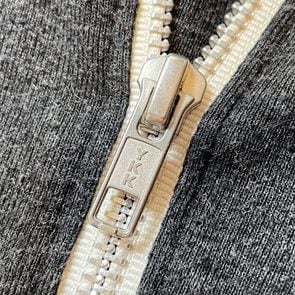This Is What the Numbers on a Toaster Really Mean
Updated: Nov. 09, 2022

Using the number dial on your toaster should be simple, but this kitchen appliance isn't as easy as 1-2-3.
Toasters are one of kitchen appliances on my counter that I have confidence in, most of the time at least. I always seem to have problems with my blender not crushing ice or my coffee pot not starting, but I can pretty much guarantee that my bread or bagel will pop out of the toaster exactly the way I like it.
But cut to a hotel breakfast, where I toast my bread on the same number setting I do at home, and it comes out charred and inedible. This has happened more than once and always has me wondering, what do the numbers on a toaster mean, anyway? So, I did some research. We got to the bottom of what the numbers on your tires mean, too, along with why golf balls have dimples.
What do the numbers on a toaster mean?
The first thought that most of us have is that the numbers on a toaster dial refer to minutes, or the amount of time your bread is in the toaster heating up before it springs up. Though this is true for some toaster models, it’s not always the case.
There are actually three types of toasters!
Timer toasters
In a timer toaster, a mechanical timer controls the toasting process. Most timer toasters tend to be pretty expensive, like this one from SMEG that guarantees your toast or bagel will pop up automatically after the toasting time is finished. Still, you have peace of mind knowing that the numbers on your device actually do refer to minutes.
Capacitor toasters
Capacitor toasters—the kind of toasters most of us own—run on a circuit that cuts off once the capacitor (a device inside your toaster that stores energy) is charged to a specific voltage. So, the numbers on these toasters refer to a resistance rate, or the time it takes for the capacitor to charge, in turn changing how long the toast actually stays in your toaster.
Bimetallic strip toasters
Bimetallic strip toasters are usually older models, and run on a circuit system connected by a bent strip. When the heat gets too high, the bimetallic strip will bend to a point where it no longer connects to the circuit, and out pops your toast. The numbers on these models control the level of electricity you’re using; a lower number means a higher electric current, which will heat up and cut off the circuit quicker and toast your bread only briefly.
Not sure which toaster is best for you? Choose the best toaster for your kitchen based on the Taste of Home Test Kitchen’s professional recommendations.
Why can’t I make perfect toast?
Though you’re now educated on the variety of toasters and dial functions, it’s still going to be impossible for you to toast a piece of bread perfectly every time.
The perfect toast depends on the kind of bread you’re using just as much as it depends on your toaster. The moisture in the bread plays a huge factor in the final toasted product, and this varies from white to wheat, as well as how old your loaf is.
Residual heat from constant usage is also a factor to consider. If you’re popping in piece after piece of bread for family brunch, heat might build up and brown your bread increasingly with each toast.
Toasters are a more complex than they look, so we recommend that users take a good look at the manual.


